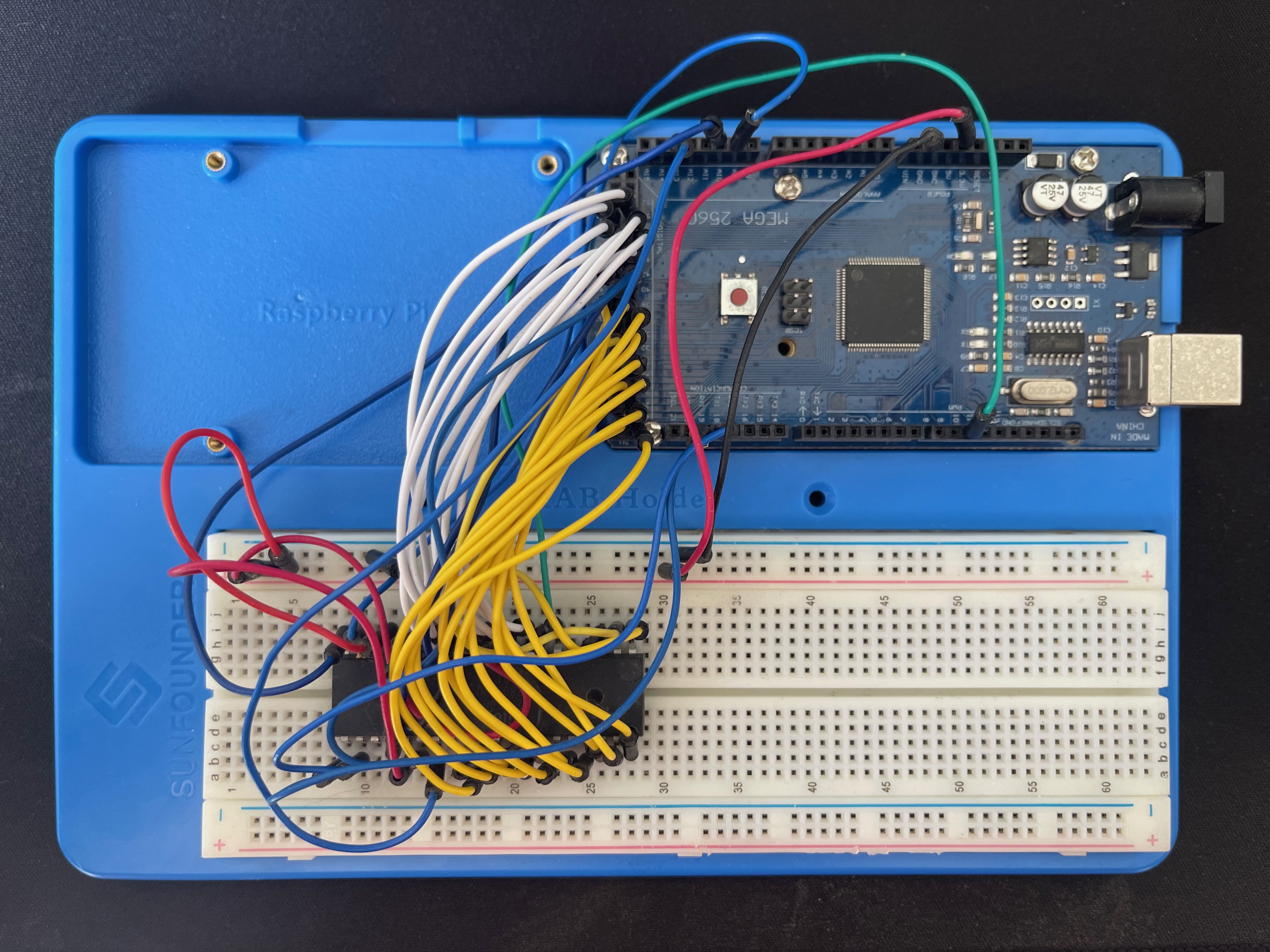Z80 Interface & Debugger with Arduino Mega

Z80 Interface & Debugger with Arduino Mega
Z80
Z80 Interface & Debugger with Arduino Mega
Creating a project to interface an Arduino Mega with a Z80 CPU for emulating clock, memory, and input/output circuits is a fascinating endeavor that blends the capabilities of modern microcontrollers with classic computing architecture. This project not only aims to emulate essential functions but also integrates debugging capabilities to interact with the Z80 system directly from a computer through the Arduino.
Sample terminal session via USB port of Arduino Mega, running in native real Z80 Microsoft Basic 4.7:
Overview
The Z80 CPU is a classic microprocessor known for its use in early personal computers and embedded systems. The Arduino Mega, with its ample I/O pins and processing power, is suitable for emulating the hardware peripherals required by the Z80, such as clock signals, memory, and I/O interfaces. Additionally, the project includes a debugging interface to control execution and modify the state of the Z80 system.
Components
- Z80 CPU: The core of the project, acting as the processing unit.
- Arduino Mega: Used to emulate clock signals, memory (RAM/ROM), and I/O devices for the Z80. It also serves as the bridge to the computer for debugging and control.
- Level Shifters: Since the Z80 operates at 5V and the Arduino Mega is also capable to manage 5V at it's Input and Output pins, no level shifters are required.
- USB-to-Serial Adapter: Facilitates communication between the Arduino Mega and the computer for debugging purposes.
- Breadboard or PCB: For mounting and connecting components.
Key Features
-
Clock Signal Emulation: The Arduino Mega generates clock signals for the Z80, allowing control over the CPU speed. This is crucial for stepping through instructions during debugging.
-
Memory Emulation: Use the Arduino Mega to emulate both RAM and ROM for the Z80. This involves intercepting memory access requests from the Z80 and either returning data (for reads) or storing data (for writes).
-
I/O Emulation: The Arduino can simulate input/output devices, such as keyboards, displays, or other peripherals, by intercepting I/O instructions from the Z80 and acting accordingly.
-
Debug Interface: A crucial part of the project, this allows for stepping through code, running the CPU, diagnosing issues, and modifying memory contents in real-time from a connected computer. This could be implemented through a custom software interface on the computer communicating with the Arduino over USB.
Implementation Steps
-
Interfacing Arduino with Z80: Connect the Z80’s data, address, and control lines to the Arduino Mega using level shifters if necessary. Design the circuit to allow the Arduino to intercept and control these lines.
-
Clock Generation: Implement a programmable clock generator in the Arduino sketch to drive the Z80's clock input.
-
Memory and I/O Emulation: Develop the Arduino sketch to handle read/write operations from the Z80, simulating memory and I/O devices.
-
Debugging Interface: Create a protocol for communication between the Arduino and a computer. This protocol should support commands for stepping, running, reading memory, writing memory, and possibly setting breakpoints.
-
Software Development: Develop software to run on the computer that communicates with the Arduino, providing a user-friendly interface for debugging and control.
-
Testing and Debugging: Initially, test each component (clock, memory, I/O) separately. Gradually integrate components, testing the system's functionality at each step.
Conclusion
This project is a challenging yet rewarding endeavor that requires a solid understanding of both the Z80 architecture and Arduino programming. It offers an excellent opportunity to delve into low-level computing and interfacing different technologies. By successfully completing this project, one would not only gain insights into the workings of early microprocessors but also acquire skills in hardware-software integration and debugging complex systems.